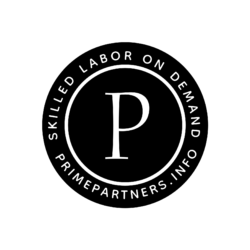Building Automation Technician Interview Preparation
Overview of Required and Recommended Certifications, Educational Background, and Industry Qualifications
Educational Background
-
Associate Degree in Building Automation Systems or a related field: This degree provides a foundational understanding of HVAC systems, electrical systems, and control systems.
-
Bachelor’s Degree: While not always required, a bachelor’s degree in engineering, technology, or a related field can be advantageous and may open up more advanced career opportunities.
Certifications
-
Certified Control Systems Technician (CCST): This certification from the International Society of Automation (ISA) validates technical skills in automation and control systems.
-
Building Automation Systems Administrator (BAS-A): Offered by industry organizations, this certification focuses on the integration and management of building automation systems.
-
HVAC Certification: Since many building automation systems are integrated with HVAC systems, having HVAC certification can be beneficial.
-
LEED Accredited Professional: Knowledge of sustainable building practices is increasingly important, and this certification demonstrates expertise in green building.
Industry Qualifications
-
Experience with Specific Automation Systems: Familiarity with popular systems such as Siemens, Johnson Controls, or Honeywell is often preferred.
-
Knowledge of Networking and IT Systems: As building automation becomes more integrated with IT, understanding networking fundamentals is crucial.
-
Electrical and Mechanical Skills: Practical skills in these areas are essential for troubleshooting and maintenance.
Interview Questions and Answers
Technical Questions
Question 1: Describe the process of implementing a new Building Automation System in an existing building. What are the key steps you would take?
Answer:
-
Assessment: Start by assessing the existing systems and infrastructure. This includes evaluating HVAC, lighting, and other building systems to understand their current state and integration capabilities.
- Example: Conduct a thorough site survey to identify existing equipment and software.
- Pitfall: Failing to identify legacy systems that may not integrate well with new technologies.
-
Design and Planning: Develop a plan that outlines the system architecture, including hardware and software components.
- Example: Create a detailed blueprint that specifies sensor placement, network architecture, and control strategies.
- Pitfall: Overlooking the future scalability of the system.
-
Implementation: Install the new system, ensuring minimal disruption to building operations.
- Example: Phase the installation process to allow for gradual integration and testing.
- Pitfall: Not coordinating with building management and tenants, leading to operational disruptions.
-
Testing and Commissioning: Conduct rigorous testing to ensure all components function as intended and meet performance requirements.
- Example: Perform both unit and system-level tests, including stress and failure mode testing.
- Pitfall: Skipping comprehensive testing due to time constraints.
-
Training and Handover: Train the building operators and technical staff on the new system.
- Example: Provide detailed manuals and hands-on training sessions.
- Pitfall: Insufficient training leading to misuse or underutilization of the system.
-
Follow-Up: Schedule regular maintenance and updates to keep the system running efficiently.
- Example: Set up a maintenance contract with clear service level agreements.
Follow-Up Points:
- How do you handle unexpected challenges during implementation?
- Can you provide examples of systems you’ve upgraded or replaced in the past?
Question 2: Explain the role of BACnet in building automation and its advantages over other protocols.
Answer:
-
Overview: BACnet (Building Automation and Control Network) is a communication protocol designed specifically for building automation applications.
- Example: Used in HVAC, lighting, access control, and fire detection systems.
-
Advantages:
- Interoperability: Allows devices from different manufacturers to communicate seamlessly.
- Example: Integrating a Siemens HVAC system with a Honeywell lighting control system.
- Scalability: Suitable for small to large-scale systems, making it flexible for various building sizes.
- Open Protocol: As an open standard, it avoids vendor lock-in and provides more choices for components and systems.
- Robustness: Offers reliable communication even in complex network environments.
- Interoperability: Allows devices from different manufacturers to communicate seamlessly.
Pitfalls:
- Complexity: BACnet systems can be complex to configure and require skilled personnel.
- Compatibility Issues: Not all devices fully support BACnet, leading to potential integration challenges.
Follow-Up Points:
- How do you troubleshoot BACnet communication issues?
- Can you compare BACnet with other protocols like Modbus or LonWorks?
Behavioral Questions
Question 3: Describe a situation where you had to work under pressure to complete a project. How did you manage it?
Answer:
- Scenario: During a system upgrade at a large commercial building, the project timeline was unexpectedly shortened due to a critical client event.
- Action: Prioritized tasks by identifying critical path activities and reallocating resources to ensure timely completion.
- Outcome: Successfully completed the upgrade with all systems operational before the event.
- Best Practices: Maintain clear communication with the client and team to manage expectations and deliverables.
- Adaptation: When necessary, bring in additional resources or adjust work hours to meet deadlines.
Pitfalls:
- Overcommitting Resources: Risk of burnout or mistakes if the team is overstretched.
- Communication Breakdown: Lack of updates can lead to misalignment and missed deadlines.
Follow-Up Points:
- How do you ensure quality is not compromised when working under tight deadlines?
- Can you provide an example of a project that did not go as planned and how you handled it?
Situational Questions
Question 4: If a critical building system fails outside of normal working hours, how would you handle it?
Answer:
- Immediate Response: Initiate remote diagnostics if possible to assess the situation.
- Example: Use remote access tools to check system status and logs.
- On-Site Intervention: If remote diagnostics are insufficient, arrange for an immediate on-site visit.
- Example: Mobilize the on-call team or go yourself to address the issue.
- Communication: Inform relevant stakeholders of the issue and estimated resolution time.
- Best Practices: Keep a clear and open line of communication with building management.
- Resolution and Follow-Up: Document the issue and resolution process for future reference and prevention.
- Example: Implement changes to prevent recurrence and schedule a debrief with the team.
Pitfalls:
- Delayed Response: Prolonged downtime can lead to significant impact on building operations.
- Incomplete Documentation: Failing to document issues can prevent learning and improvements.
Follow-Up Points:
- How do you prioritize tasks when multiple systems are affected?
- What steps do you take to prevent future occurrences?
Problem-Solving Questions
Question 5: A building’s energy consumption has unexpectedly increased. How would you investigate and address this issue?
Answer:
- Data Analysis: Begin with analyzing energy consumption data to identify patterns or anomalies.
- Example: Use building management software to review historical data and pinpoint spikes in usage.
- System Inspection: Conduct a thorough inspection of all major systems (HVAC, lighting, etc.) to identify potential issues.
- Example: Check for HVAC systems running longer than necessary or malfunctioning sensors.
- Stakeholder Consultation: Engage with building occupants and management to identify any changes in building usage.
- Best Practices: Open dialogue can reveal insights such as new equipment or increased occupancy.
- Solution Implementation: Implement corrective measures such as recalibrating sensors, optimizing schedules, or repairing faulty equipment.
- Adaptation: Regularly review and adjust energy-saving strategies based on findings.
Pitfalls:
- Ignoring External Factors: Failing to consider weather changes or external events impacting energy use.
- Inadequate Monitoring: Lack of real-time monitoring can delay detection and response.
Follow-Up Points:
- What tools do you use for energy monitoring and analysis?
- Can you share an example where energy efficiency improvements were successfully implemented?
Additional Questions
Question 6: What are the most common issues you encounter with Building Automation Systems, and how do you resolve them?
Answer:
- Sensor Failures: Regular calibration and maintenance checks can mitigate this.
- Example: Implement predictive maintenance schedules to reduce downtime.
- Network Connectivity Issues: Resolve by ensuring robust network infrastructure and redundancy.
- Example: Use VLANs and managed switches to isolate and manage traffic.
- Software Bugs: Regular updates and patches can prevent many software-related issues.
- Example: Schedule regular system updates and maintain a test environment for new patches.
Follow-Up Points:
- How do you stay updated with new technologies and system updates?
- Can you discuss a challenging technical issue you resolved?
Question 7: How do you prioritize your tasks when managing multiple ongoing projects?
Answer:
- Assessment: Evaluate each project based on urgency, impact, and resource availability.
- Example: Use a priority matrix to categorize tasks.
- Delegation: Delegate tasks to team members based on their expertise and current workload.
- Best Practices: Regularly review and adjust priorities as project conditions change.
- Communication: Maintain clear communication with all stakeholders to manage expectations and progress.
Follow-Up Points:
- Can you describe a time when you had to adjust priorities unexpectedly?
- How do you ensure all projects receive adequate attention?
Question 8: Describe a time you implemented a new technology or system. What challenges did you face, and how did you overcome them?
Answer:
- Scenario: Implemented a new IoT-based energy management system in a commercial building.
- Challenge: Integration with existing legacy systems was difficult.
- Solution: Developed custom middleware to bridge communication gaps between old and new systems.
- Outcome: Achieved seamless integration and improved energy efficiency by 20%.
- Adaptation: Continuous monitoring and updates to address any compatibility issues.
Follow-Up Points:
- How do you evaluate and select new technologies for implementation?
- What steps do you take to ensure a smooth transition to new systems?
These comprehensive questions and answers provide a robust framework for preparing for an interview as a Building Automation Technician. They cover a wide range of scenarios and include detailed explanations to ensure a deep understanding of the role and its challenges.
More Controls Interview Guides
Explore more interview guides for Integrated Systems positions.
Building Automation Technician Interview Preparation
This Building Automation Technician Interview Preparation guide equips job seekers with essential knowledge and skill...
PLC Programmer Interview Preparation
This guide prepares job seekers for PLC Programmer interviews by covering essential topics such as understanding PLC ...
Smart Building Integration Specialist Interview Questions and Answers
This guide provides job seekers with essential interview questions and answers for a Smart Building Integration Speci...
HVAC Controls Technician Interview Guide
The HVAC Controls Technician Interview Guide equips job seekers with essential insights to excel in interviews for HV...
Industrial Controls Engineer Interview Help
This Industrial Controls Engineer Interview Help guide equips job seekers with essential strategies to excel in inter...
Recent Articles
Check out more articles from Best Electrician Jobs about getting hired inthe electrical industry.
The Ultimate Electrician Resume Guide (2025 Edition)
Step-by-step blueprint to craft a job-winning electrician resume—free Google Docs templates, mobile editing tips, and...
Best Job Board for Electricians
Discover the best job board for electricians! Boost your career with insights on salaries, training, and growth!
Improve Your Electrician Job Postings for More Applicants
Discover how to improve your electrician job postings for more applicants! Boost your career with insights on salarie...
What is the Highest Paying Electrician Role?
Discover the highest paying electrician roles and how to prepare for them. Learn about the skills and certifications ...
Industrial Electrician Careers in California
From manufacturing plants to data centers, industrial electricians play a vital role in California's economy. Discove...
Featured Jobs
-

- Company
- Prime Partners
- Title and Location
- Residential Journeyman
- Lynchburg, VA
- Employment Type
- FULL_TIME
- Salary
- $30.24-$32.48/HOUR
- Team and Date
- Residential
- Posted: 11/05/2025
-

- Company
- Prime Partners
- Title and Location
- Cable Puller
- Dublin, CA
- Employment Type
- FULL_TIME
- Salary
- $18.72-$23.78/HOUR
- Team and Date
- Commercial
- Posted: 11/05/2025
-

- Company
- Prime Partners
- Title and Location
- Senior Audio Visual Technician
- La Puente, CA
- Employment Type
- FULL_TIME
- Salary
- $42.89-$50.53/HOUR
- Team and Date
- Commercial
- Posted: 11/05/2025
-

- Company
- First Contracting
- Title and Location
- Journeyman Electrician
- Detroit, MI
- Employment Type
- FULL_TIME
- Salary
- $31.53-$38.18/HOUR
- Team and Date
- Residential
- Posted: 11/05/2025
-

- Company
- Prime Partners
- Title and Location
- Lead Security Technician
- Indianapolis, IN
- Employment Type
- FULL_TIME
- Salary
- $36.04-$44.52/HOUR
- Team and Date
- Commercial
- Posted: 11/05/2025
-

- Company
- Prime Partners
- Title and Location
- Electrician Helper
- Eureka, CA
- Employment Type
- FULL_TIME
- Salary
- $20.48-$26.58/HOUR
- Team and Date
- Commercial
- Posted: 11/05/2025
Best Electrician Jobs
Ready to get started?
Stop worring about manpower. And get back to what you do best.
Best Electrician Jobs is for Everyone
At Best Electrician Jobs, we are dedicated to fostering an inclusive environment that values diverse perspectives, ideas, and backgrounds. We strive to ensure equal employment opportunities for all applicants and employees. Our commitment is to prevent discrimination based on any protected characteristic, including race, color, ancestry, national origin, religion, creed, age, disability (mental and physical), sex, gender, sexual orientation, gender identity, gender expression, medical condition, genetic information, family care or medical leave status, marital status, domestic partner status, and military and veteran status.
We uphold all characteristics protected by US federal, state, or local laws, as well as the laws of the country or jurisdiction where you work.
 Best Electrician Jobs
Best Electrician Jobs